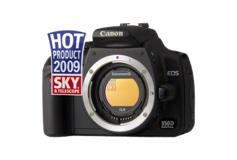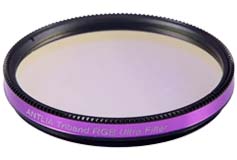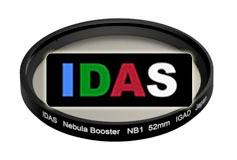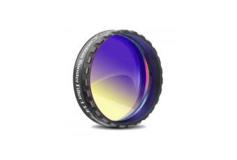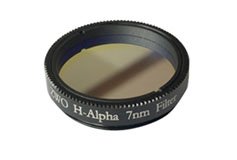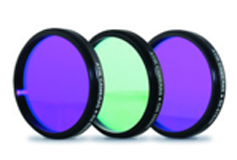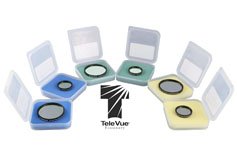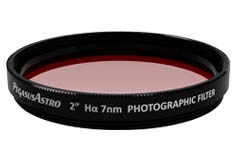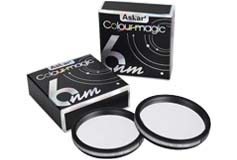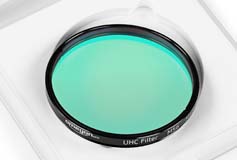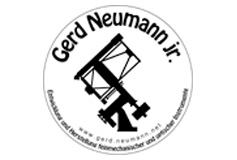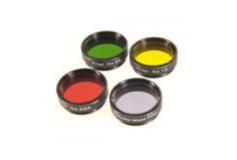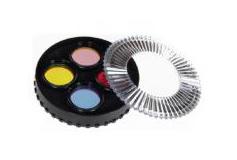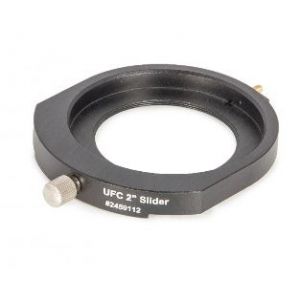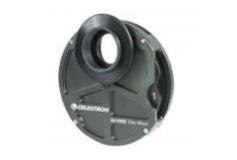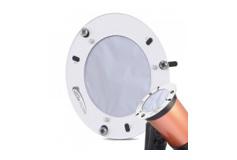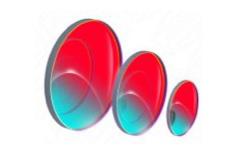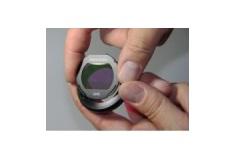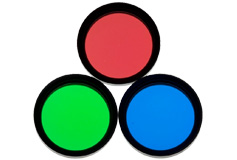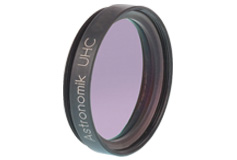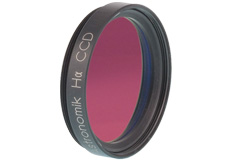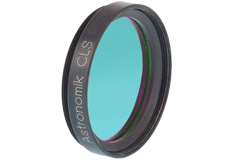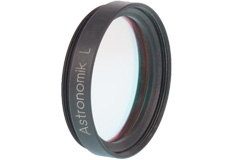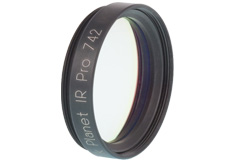Filters and Filter Wheels
Filters and Filter Wheels for Astronomy
Discover an extensive selection of telescope filters to enhance your telescope viewing experience and optimize the results of your astrophotography endeavors.
Filters and Filter Wheels for Astronomy
Moon Filters
A Moon Filter is the first everyone gets. Probably as the Moon is the most observed object in the sky. This filter cuts down the brightness of the Moon's glare which can get very bright. It will also increase the contrast slightly making details easier to see.
Coloured Filters
Coloured Filters, typically red, green, blue and yellow are good for observing the planets. By swapping the filters the different colours will bring out different details in the planets such as in Jupiter's cloud belts. This increases the contrast of surface details and lowers the brightness. The human eye is most sensitive in Green light. Red is the complimentary colour to the green, both are good on Mars in particular. Blue filter is great on Jupiter's belts and Yellow is the complimentary to the blue. The Orange filter is a more subtle red or vibrant yellow.
Light Pollution Filters
The Sodium Light Pollution helps combat street lighting. It cuts out the wavelength of light associated with sodium street lighting. It helps but you still can't beat decent dark skies.
The UHC Light Contrast filter for increasing the contrast of nebulae against the background sky. The difference when using one of these is dramatic. The Contrast Enhancement Filter will not darken the sky as much as an Light Pollution Reduction filter, but will increase overall contrast between stars and the sky background. The spectral region with significant light scatter is toward the blue (440-470nm). This scatter is seen during the day as the blue sky. The yellow region is left largely untouched. This will keep stellar brightness near normal, with some minor colour shift. The Contrast Enhancement filter will improve contrast to a larger number of objects than the typical Nebula and LPR filters.
Planetary Contrast Enhancement Filters
The Planetary Contrast Eyepiece Filter has three peaks of high transmission with the regions in between being heavily rejected. This sort of filtration is impossible with dye-in-glass filters. This filter will show increased contrast and detail on various objects. The greater the spectral output of an object, the greater the effect.
Nebula Filters
Sirius Nebula Filter has standard threads and mounts on most eyepieces, diagonals and camera adapters. The effects of light pollution will be greatly reduced, improving contrast and visibility of emission nebula. Stellar objects will lose a great deal of intensity as a result. These filters lie between the narrowband O-III and the more common nebula filter in bandwidth. As with the other interference filters, a second layer of glass does not protect these. When attached to an eyepiece, the coating will face the eyepiece and therefore be protected from the elements. It is recommended to keep the filter attached to the eyepiece when coming in from the cold night to prevent moisture from forming.
Minus Violet Filter
Minus Violet Filter is a specialised corrective filter that greatly reduces the annoying false colour fringing of violet rim of light around very bright objects in refractors. This effect is common in relatively moderately price achromatic refractor telescopes. With the Minus Violet attached to your eyepiece in these scopes, you will get sharper images and higher possible magnification. Use day or night.
Near InFra-Red Filter
The NIR filter has standard threads and mounts on most eyepieces, diagonals and camera adapters. The Sirius Optics Near Infrared blocking filter is designed block out the IF saturating energy that can blur the images on a CCD camera, modified web cams and Video cameras. It is a multiple-layer interference coating deposited onto optical glass and is mounted into a standard 1.25-inch threaded barrel that screws into the nose of CCD cameras and adapters. CCD chips are sensitive in the near infrared (NIR). Although shorter exposures generally require no IR filtering, longer exposures with CCD cameras usually result in images blooming, because of the sensitivity in the infrared. This filter nearly eliminates this NIR from 700nm-950nm while keeping the transmission very high across the visible spectrum, thus removing the blooming affect from long exposure images. The filter is virtually clear in the visible light spectrum, so it causes no colour shift of captured objects.

